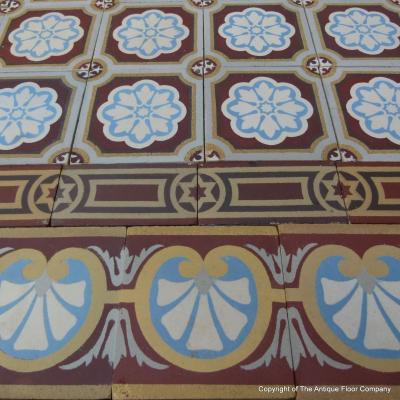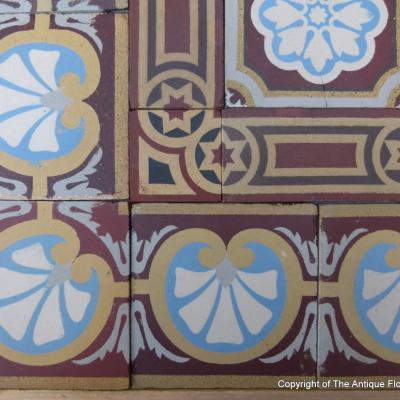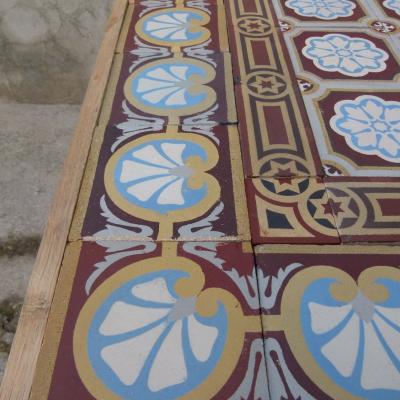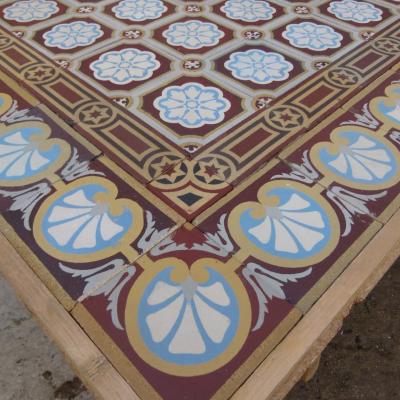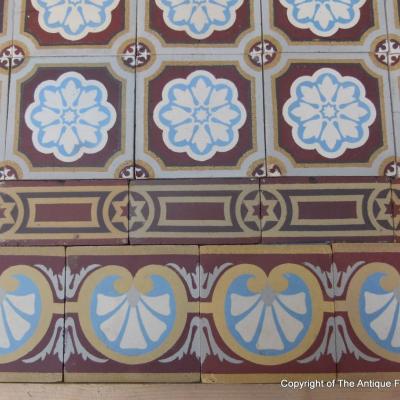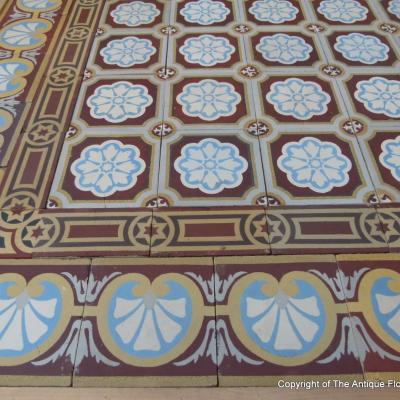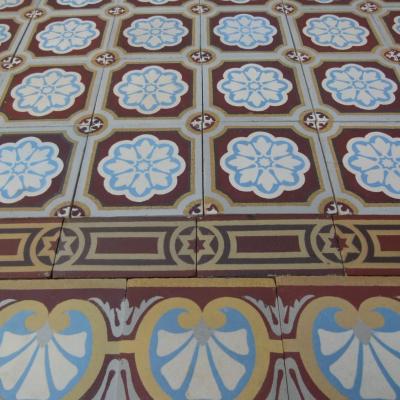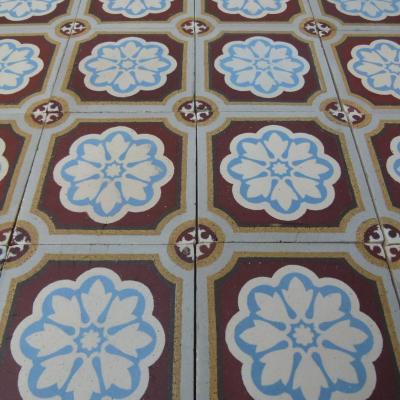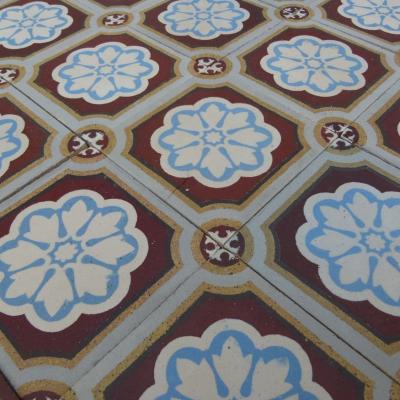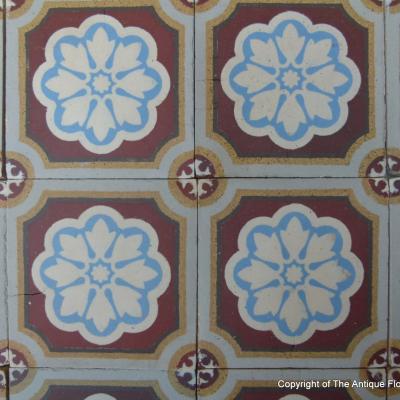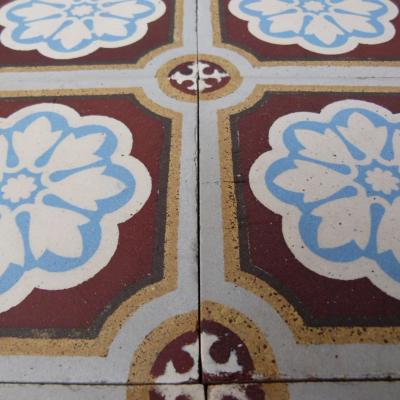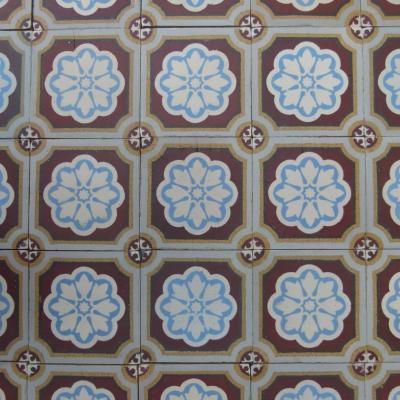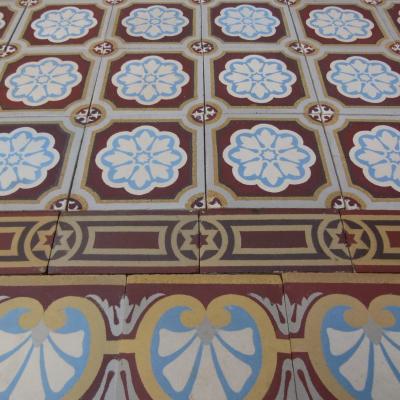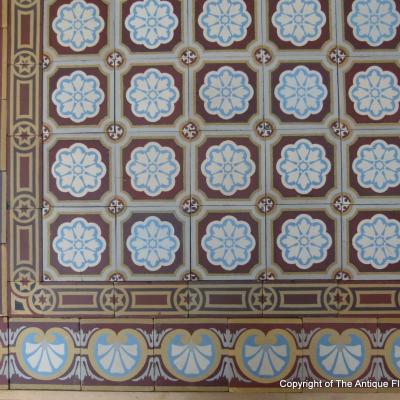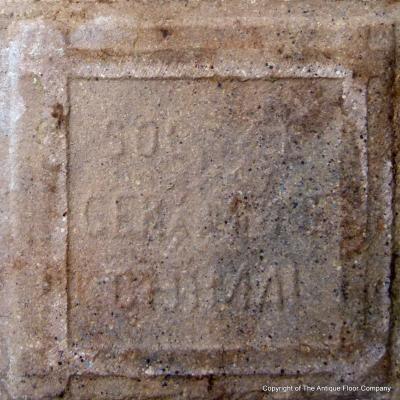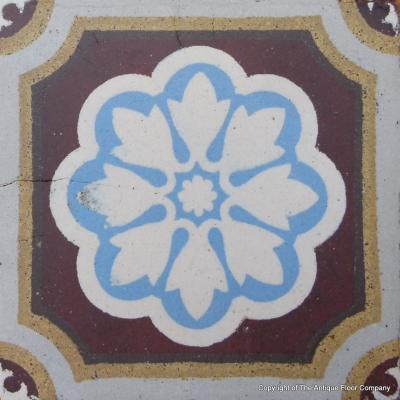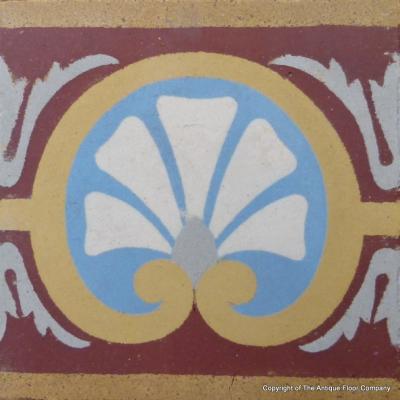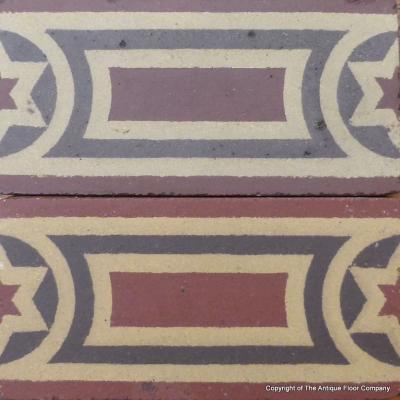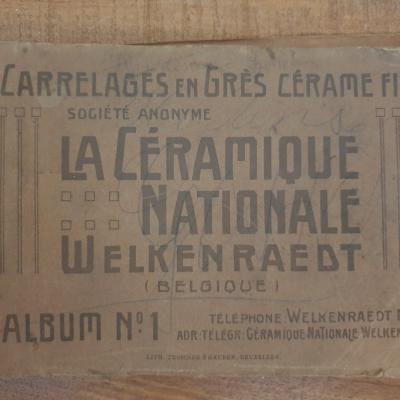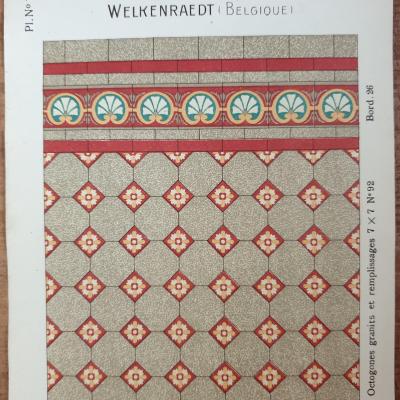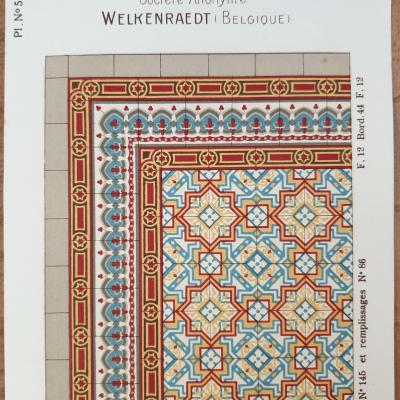A 10m2 / 108 sq ft antique Belgium ceramic - early 20th century
A reclaimed, and now fully restored, Belgian ceramic floor with its original full-size and half-sized borders totalling 10m2/ 108 sq ft. The field tile and large borders are 14.5cm / 5.7 inches sq and the half-sized small borders, 14.5cm x 7.25cm.
The principal field tile was manufactured by Societe Ceramiques, Chimay, Belgique and both the large and half-sized borders by La Ceramique Nationale Welkenraedt, Belgique. For provenance, we include in the photo gallery scans from their period catalogue showing the two borders.
These handmade tiles offer not only a glimpse into the quality of past craftsmanship but also a unique and enduring beauty. This is an intricate floor, dating from the early 20th century. At the center of the design is a principal field tile, each showcasing a stylized floral motif with eight white and light blue petals arranged symmetrically, forming a rosette. These motifs sit against a deep maroon or dark-reddish background that highlights their pale colours. Each tile is bordered by a golden-ochre outline, and where the corners meet, small quatrefoil or star-shaped connectors form a lattice that ties the pattern together across the entire field.
Surrounding the central field tiles is an intermediate border that uses a geometric pattern composed of interlocking lines and stylized stars, rendered in ochre, brown, and cream tones. This section adds a sense of order and transition between the main field and the outer edge. The outermost large border is particularly distinctive, featuring scallop shell motifs placed in circular frames. These shells are white and light blue, bordered by ochre, and repeat rhythmically, creating a sense of formality and movement around the perimeter.
The style of the design—featuring a mix of floral and geometric elements—suggests influences from Gothic Revival and Moorish art, which were both popular in decorative traditions at the time. The scallop shell motif seen in the border may also reference pilgrimage symbolism, especially the famous shell of Saint James, although it could equally be interpreted as a neoclassical decorative element.
The floor has restored beautifully, revealing a warm antique patina with a few tiles bearing groutable edge nibbles or small chips. The high-resolution photographs in the gallery are of a randomly selected section of the floor, representative of the whole. We have reclaimed all four of the large border corners but only one of the small border corners, but the missing corners can easily be mitre cut by the tiler to create the necessary rendezvous.
Tile quantities, give or take one or two:-
FIELD tiles – 390 – 8.2m2 / 88.2 sq ft.
LARGE BORDER tiles - 63 plus 4 corners – 1.41m2 / 15.2 sq ft or 9.72 linear metres / 31.8 linear feet
SMALL BORDERS tiles – 48 plus 1 corner– 0.5 m2 / 5.4 sq ft or 7 linear metres / 23 linear feet
NOTE Antique tiles were most commonly made in single or two tile moulds. Before current computer automation methods their moulds were made by hand and the colour slips mixed by eye. Kiln temperatures could also be variable, as could the firing time. The result is that tiles often display subtle size and thickness variations and there can be tonal variations in colours, owing to the slip mixing and/or firing time. All of this makes these handmade tiles unique and adds to their charm. Some floors display their subtle variations in size and tones, some not, but when photographing we always take a random section of the floor so that it is representative of the whole. A tiler should always dry lay a section of the tiles to familiarise himself with them before starting to fix lay.
CL175



